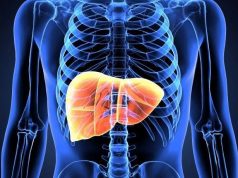Absolute change in advanced liver disease highest in heavy alcohol use subgroups with and without MetS
By Elana Gotkine HealthDay Reporter
TUESDAY, May 9, 2023 (HealthDay News) — Increases in advanced liver disease are seen with heavy alcohol use, with or without metabolic syndrome (MetS), according to a research letter published online May 9 in the Annals of Internal Medicine.
Noting that mortality from alcohol-associated liver disease (ALD) increased from 2009 to 2018 despite stable or declining prevalence of alcohol use, Brian P. Lee, M.D., from the University of Southern California Keck School of Medicine in Los Angeles, and colleagues examined the contribution of MetS. The survey-weighted prevalence was estimated for six key subgroups: no, nonheavy, and heavy alcohol use without MetS (7,204, 17,475, and 805 participants, respectively) and no, nonheavy, and heavy alcohol use with MetS (6,818, 9,516, and 406 participants, respectively). Marginally adjusted probabilities for advanced liver disease (Fibrosis-4 score >2.67) were estimated for each subgroup.
The researchers found that the survey-weighted prevalence of persons with MetS and nonheavy alcohol use increased (18.7 to 27.5 percent from 1999-2002 to 2015-2018), while the prevalence of all other subgroups decreased or remained stable. Among all subgroups, the adjusted probability of advanced liver disease increased within each subgroup throughout the study period, with the highest absolute change seen in heavy alcohol use subgroups with MetS (2.4 to 5.2 percentage points from 1999-2002 to 2015-2018) and without MetS (3.0 to 10.8 percentage points from 1999-2002 to 2015-2018).
“These findings suggest an increasing interaction effect with MetS and heavy alcohol use that may be contributing to the recent surge in ALD-related mortality, but the reasons for this are not fully elucidated; thus, this is an area for future research,” the authors write.
Abstract/Full Text (subscription or payment may be required)
Copyright © 2023 HealthDay. All rights reserved.








